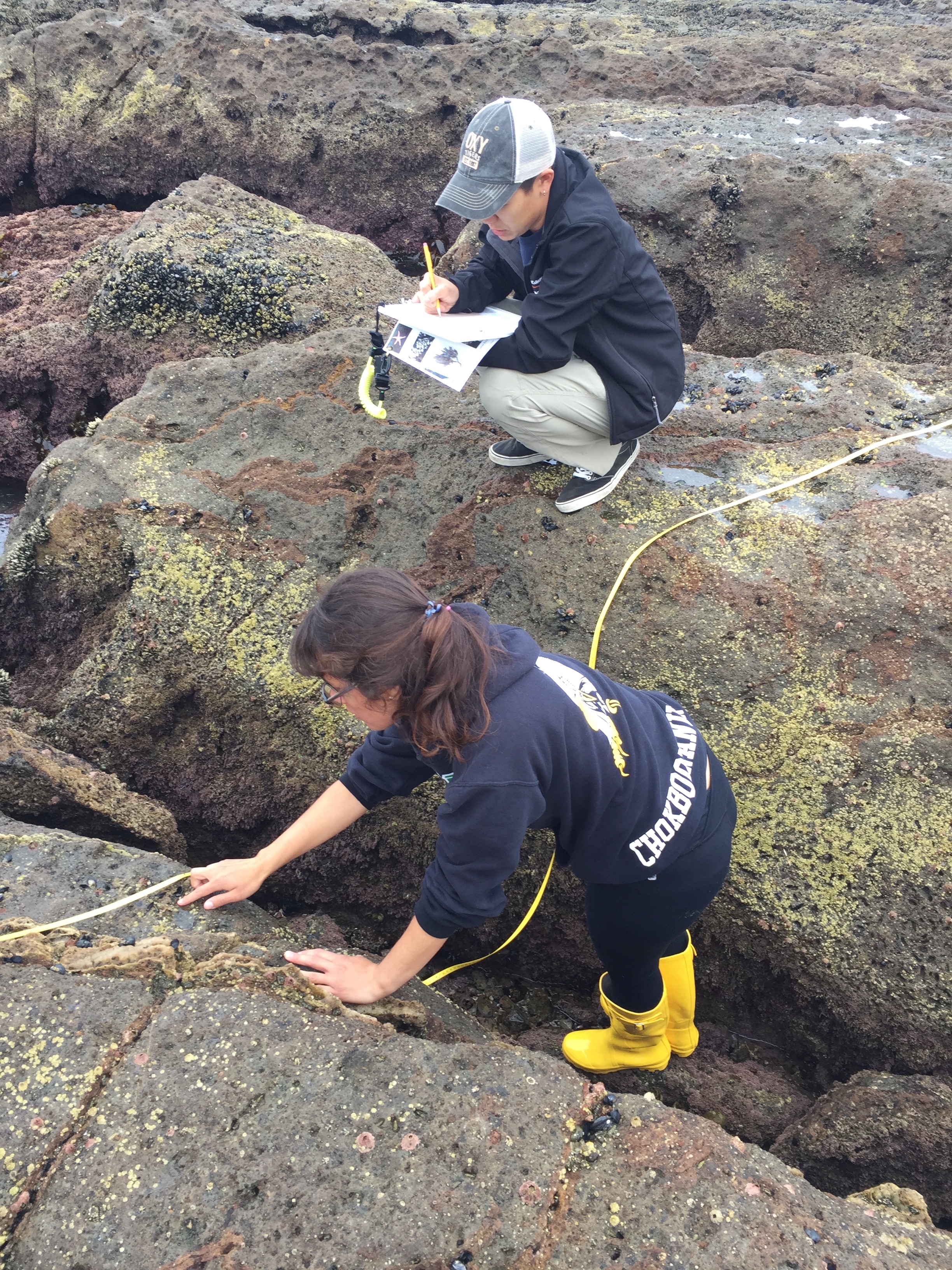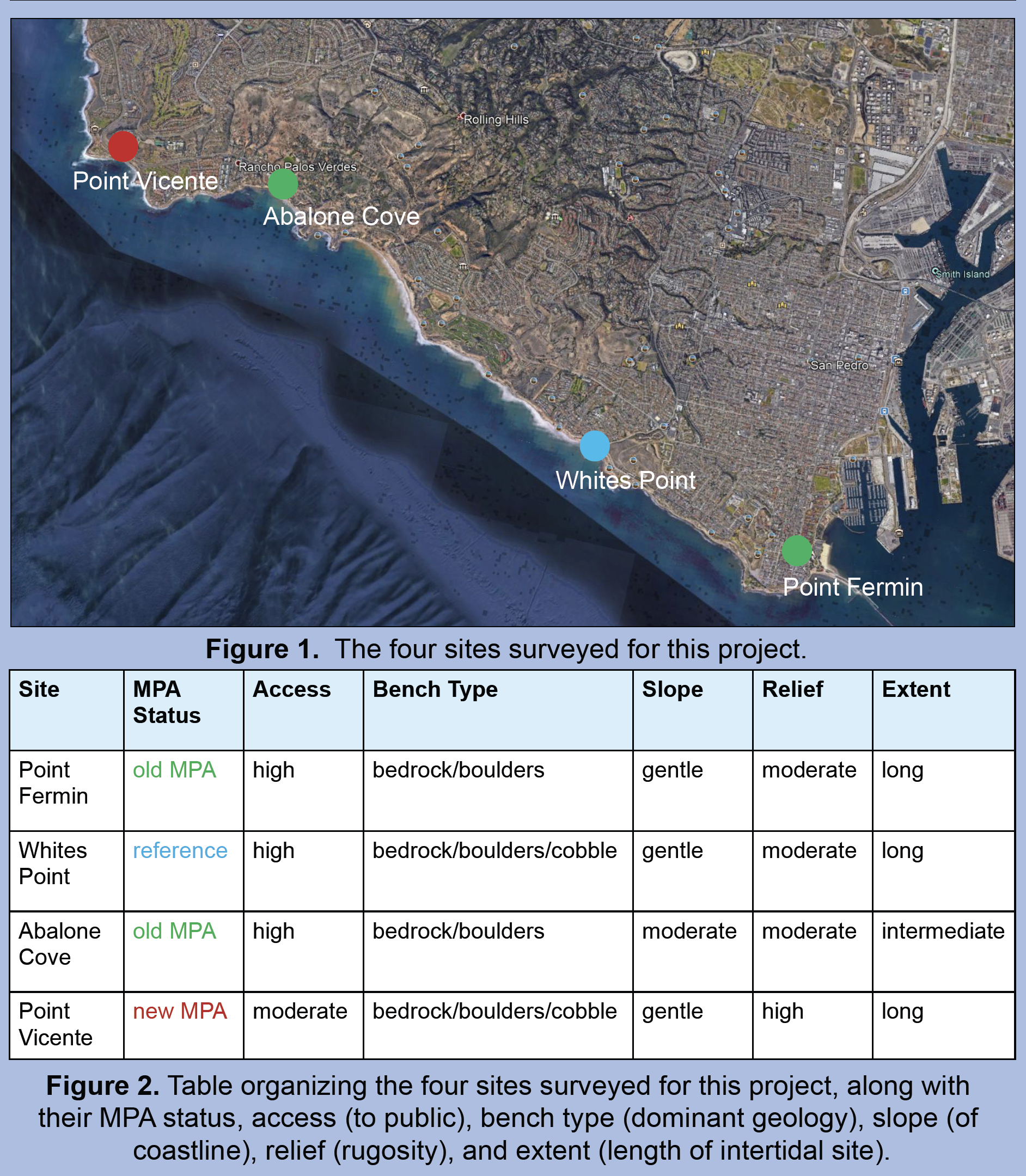
Comparing historical and current intertidal algae and invertebrate communities in MPA and non-MPA sites at the Palos Verdes Peninsula
Rocky shores are heavily impacted by human presence due to their easy access, recreational purpose, and educational value. Being highly exposed to human disturbance renders these shores vulnerable to harmful effects, such as extraction and trampling, both of which agitate and interfere with the natural growth of these biodiverse ecosystems. Rocky shores, in addition, are simultaneously affected by other biotic factors, such as competition and predation, as well as abiotic factors, including wave action, tides, and temperature. In an effort to protect these highly diverse systems from human impact, California State Legislature passed the Marine Life Protection Act in 1999 to preserve the long-term health of California's marine life by establishing a statewide network of marine protected areas (MPAs). In order to observe how limited human contact and visitation affects the biodiversity of these rocky shores, I intend to focus on four different sites which have been placed under different protective measures: Point Fermin (old MPA), Whites Point (reference site, not protected), Abalone Cove (old MPA), and Point Vicente (recent MPA; established in 2012). By focusing on different sites, I will also be able to observe how the types and abundance of various sessile and mobile taxa differ based on location. I aim to determine the effectiveness the MPA designation has had on four sites along the South Coast specifically as it pertains to the populations of the species studied in historical data and how they differ today. My hypothesis is that the reference site, having no protection at all, will significantly be the least biodiverse as a result of frequent human disturbance whereas the two old MPAs and current MPA will be less distant from one another in terms of biodiversity due to having a history of greater protection measures.
Presentations: 2018 Occidental Undergraduate Research Conference

